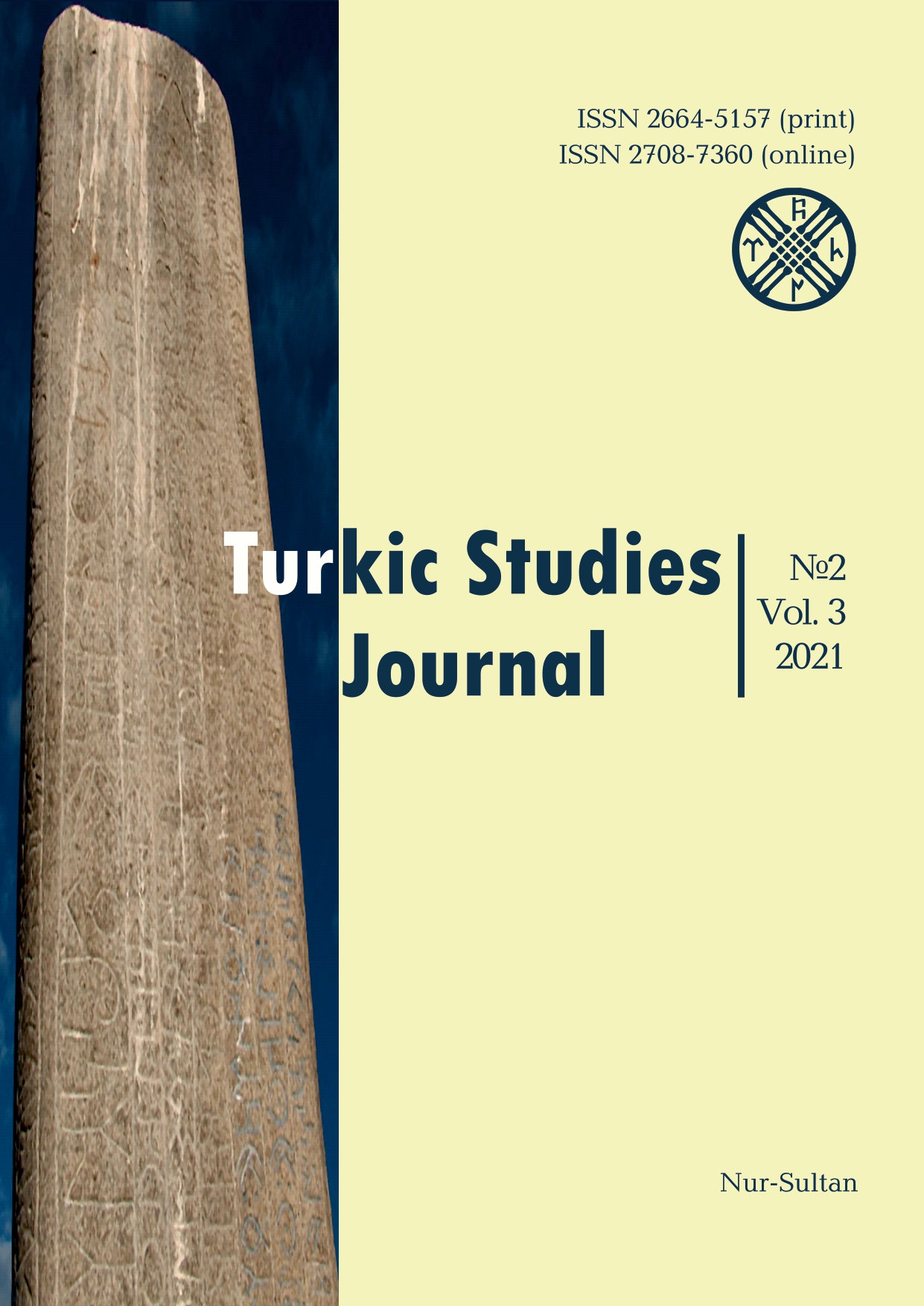The Apai-Bori Union in the context of Basmyl-Karluk relations (from the experience of legend analysis)
Views: 236 / PDF downloads: 229
DOI:
https://doi.org/10.32523/2664-5157-2021-2-32-43Keywords:
oral tradition, historical tradition, basmyl, karluk migration, huns, shors, sacralisationAbstract
The historical legend of «The origin of the Apai-Bori Union» which is preserved in
the Kazakh oral tradition gives а specific information about the grandiose migrations from the east to
the west of Central Asia in the IX-XI centuries. In the context of the image of the man «in a wolfskin
coat and on a gray horse», we see the tribal group of Bori (in Chinese texts also known as Fule), one
of the militant components of the ancient Turkic khaganates, who retreated to the west after heavy
wars on the banks of the Orkhon.
Second, through the image of the Apai, and her son who was born from the karakesek, we have
already penetrated the Karluk problem. Karakeseks are connected with karluks. Now they are part of
the Kazakh and Kyrgyz communities.
Third, during the movement to the west, the Karluks began to develop the territories freed from
the Huns. Perhaps, they inherited their political values, which later helped them to create the empire
of Karakhan.
Fourth, it can be assumed that the fact there are generic groups of Siberian shors among the
Karakesek is probably revealed through the analysis of name of the native leader of the karakeseks of
Bolat Kozha. In fact, Bolat and Karluk (Karaluk) are similar synonymous. Both of these names were
applied in the past to steel from which highest quality cutting weapons were prepared. The Siberian
Shor people’s sacred attitude to blacksmithing has been preserved to this day.
Fifth and last, the story of the Apai-Bori union in the Kazakh genealogy is an excellent source
that allows researchers to study problems associated with the migration of the Basmyl-Karluk tribes.
All of the above is disclosed in this article.


























